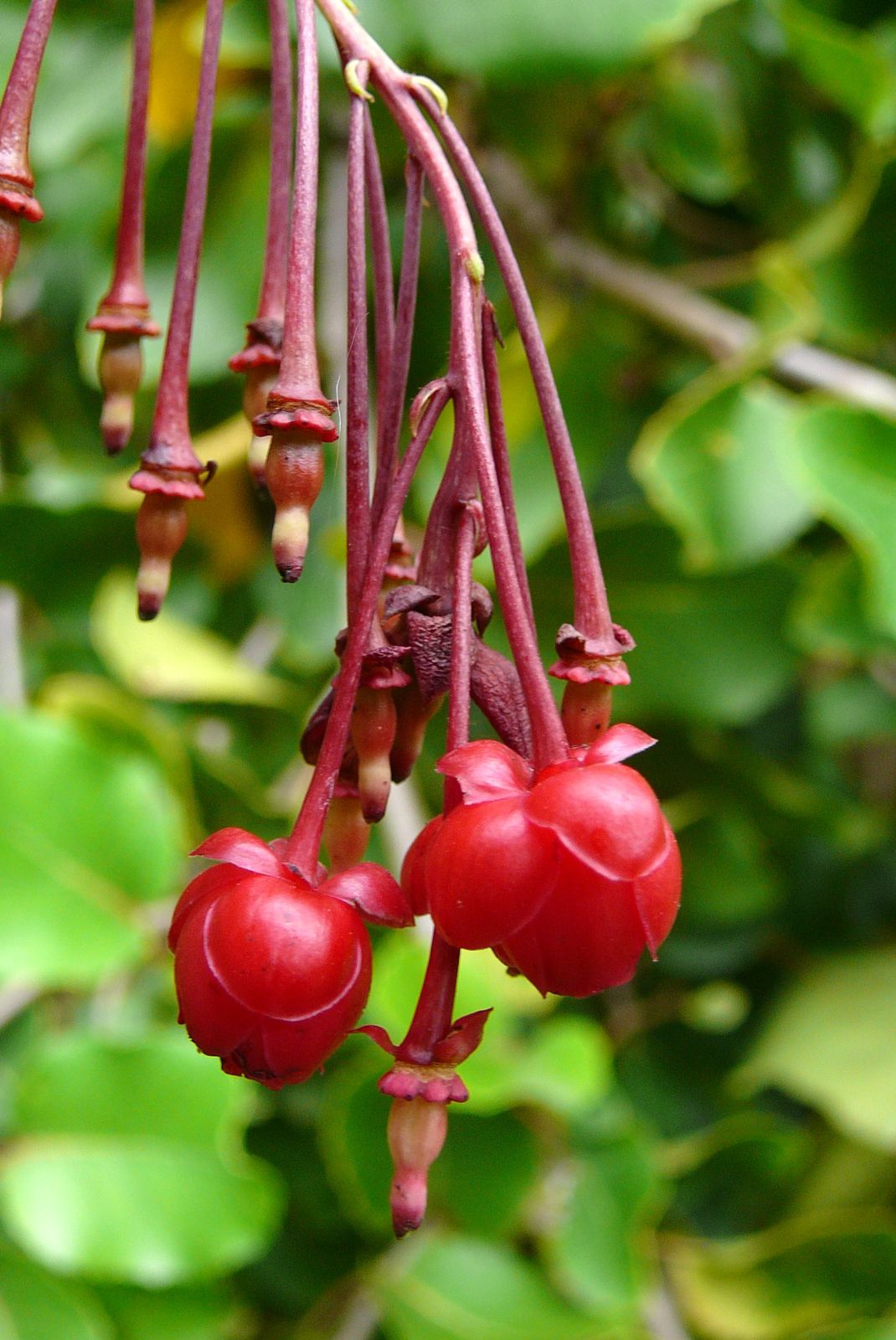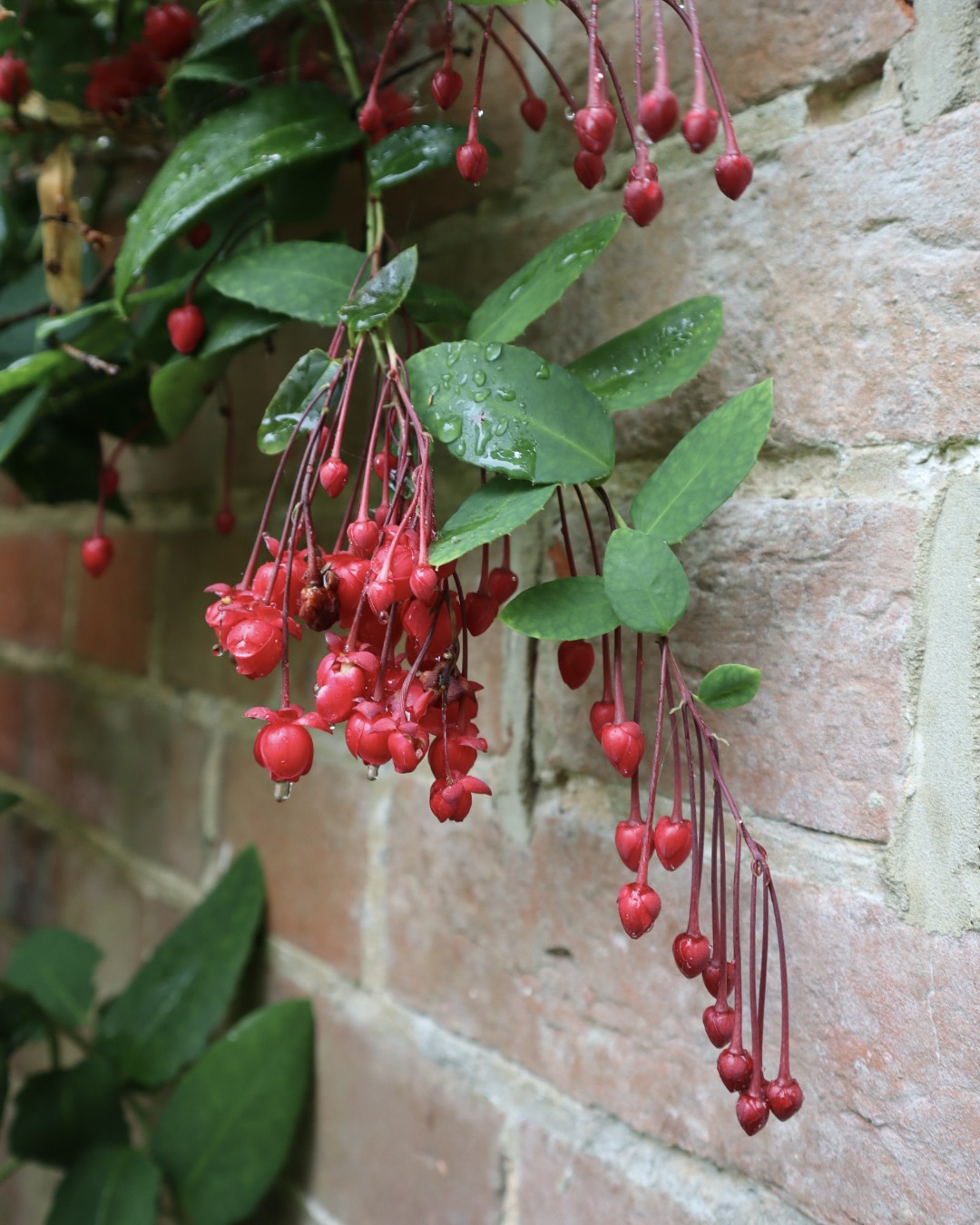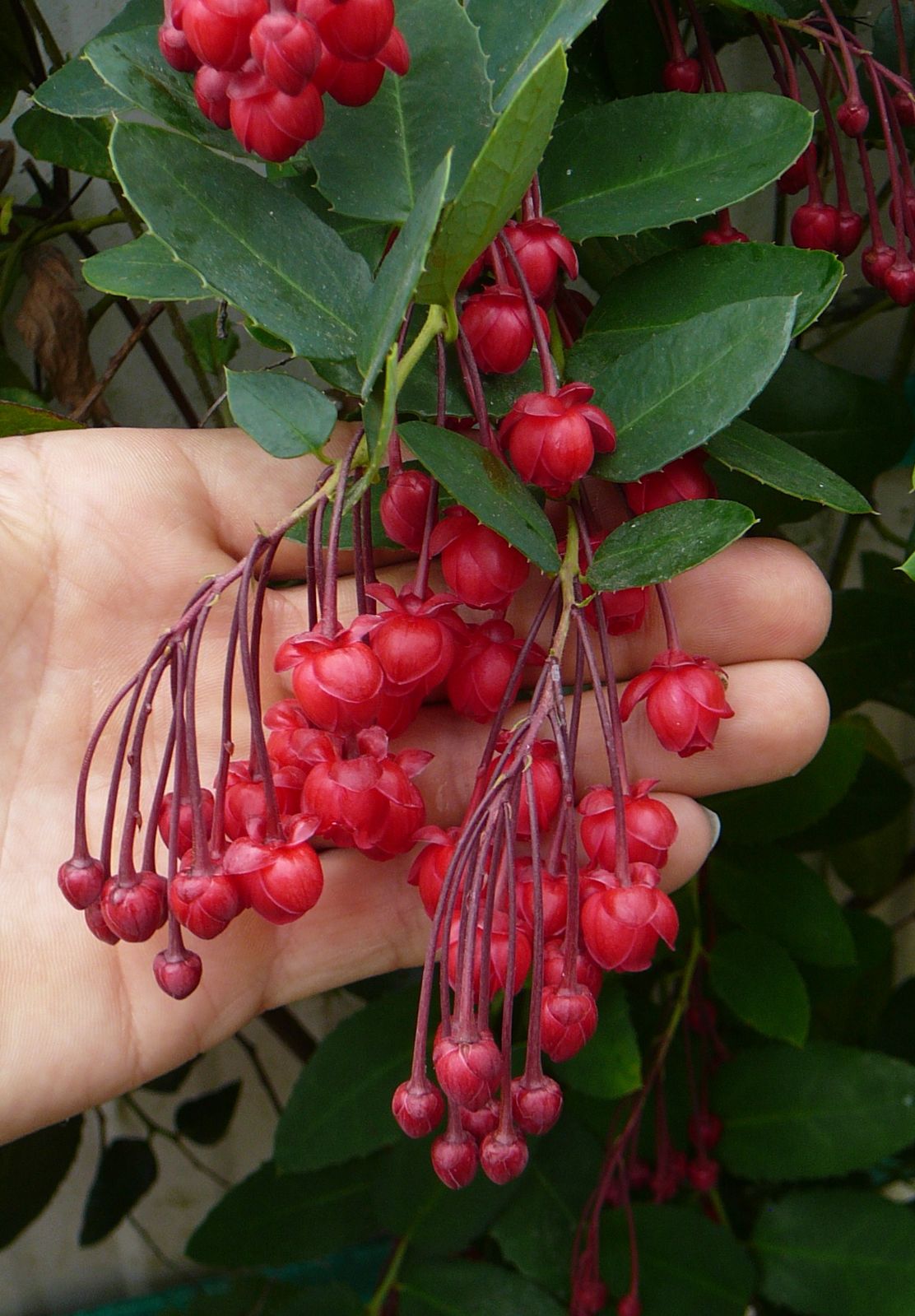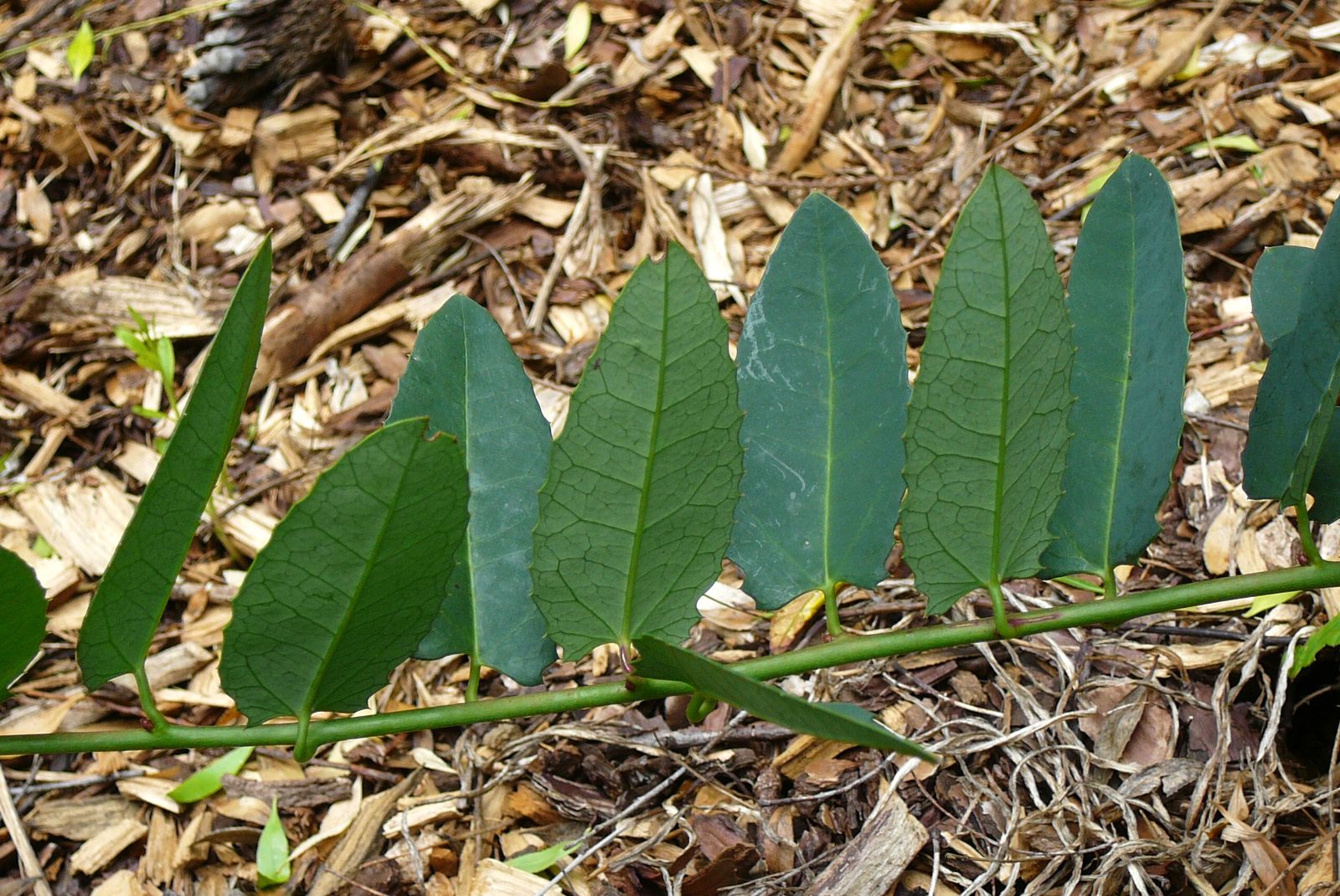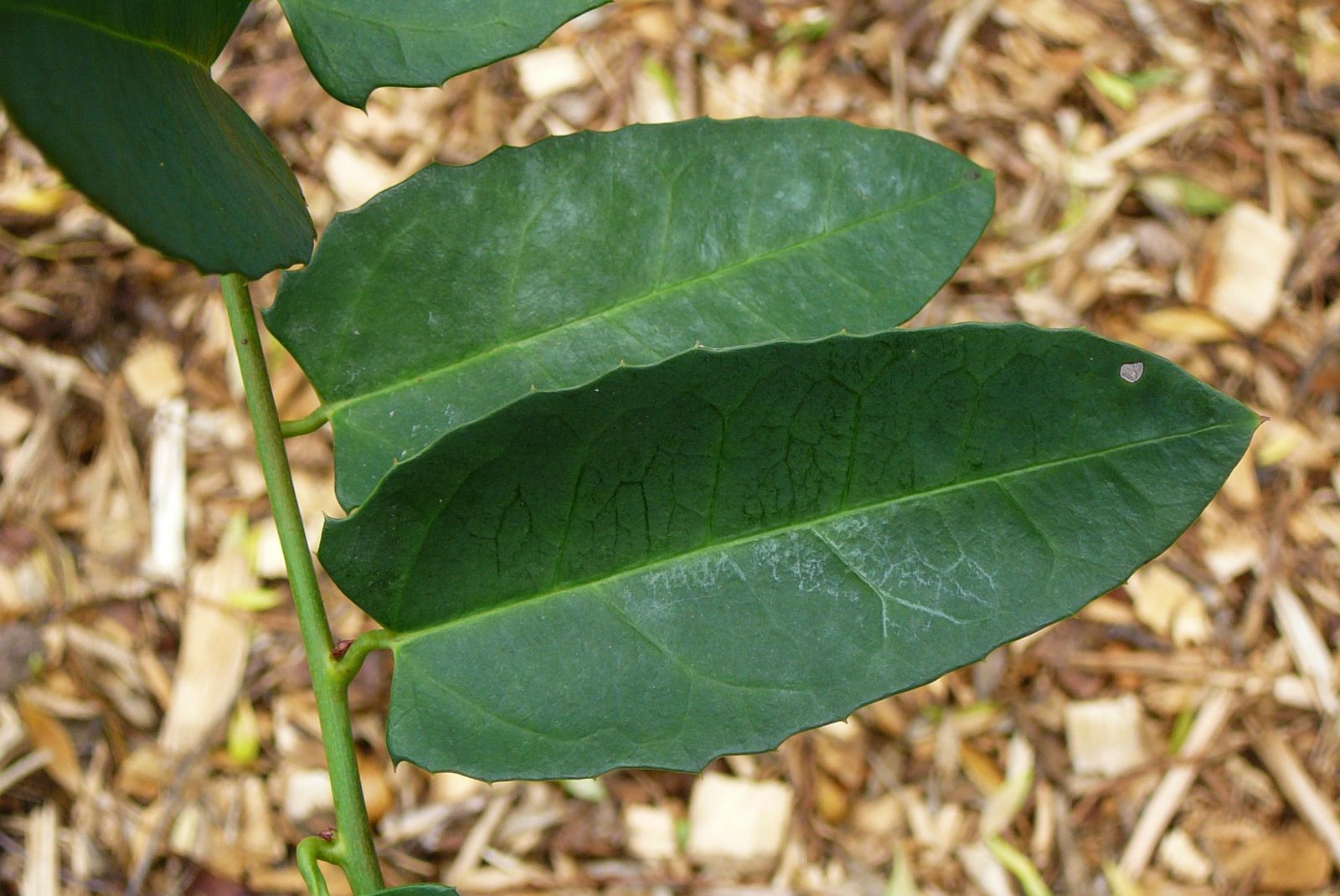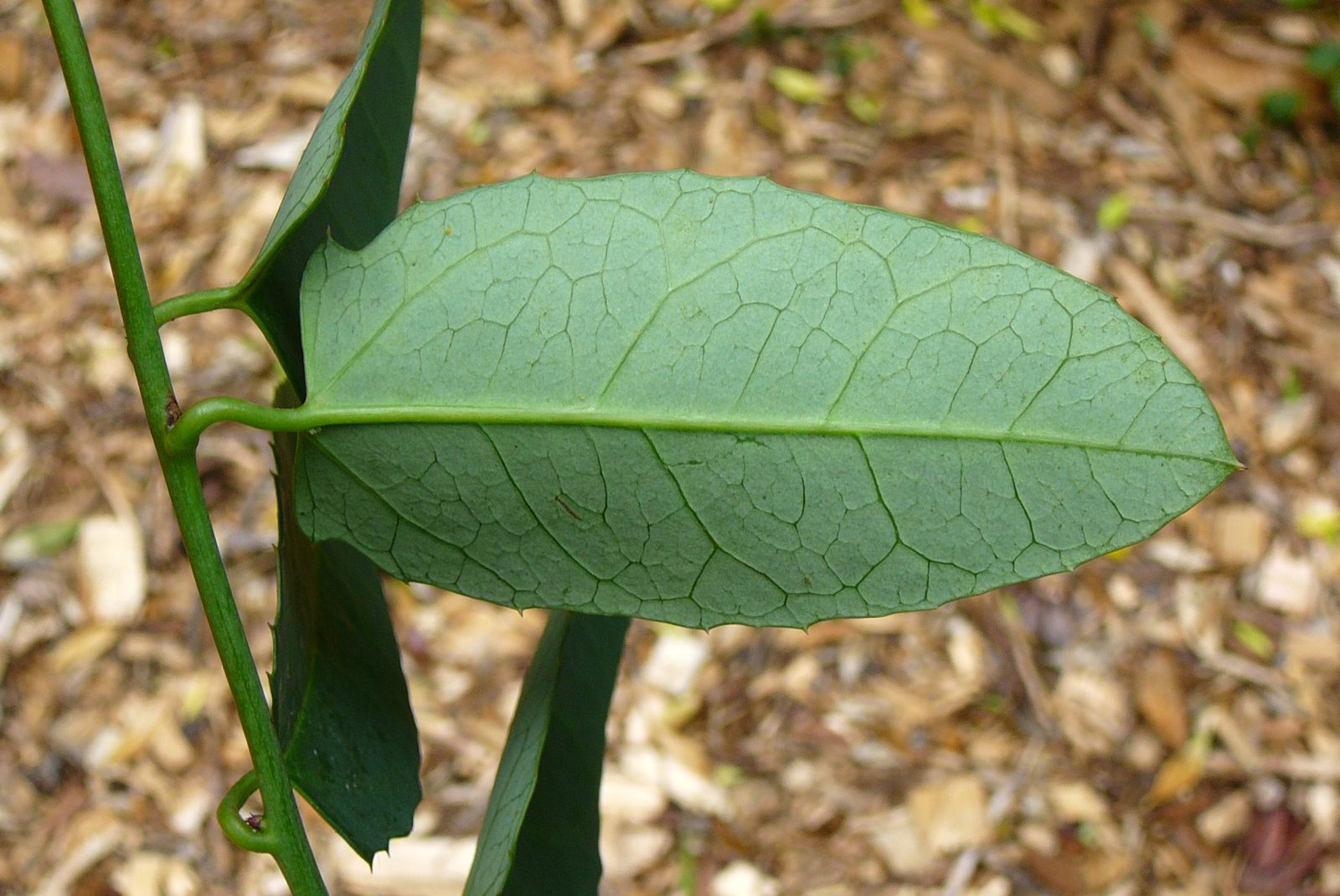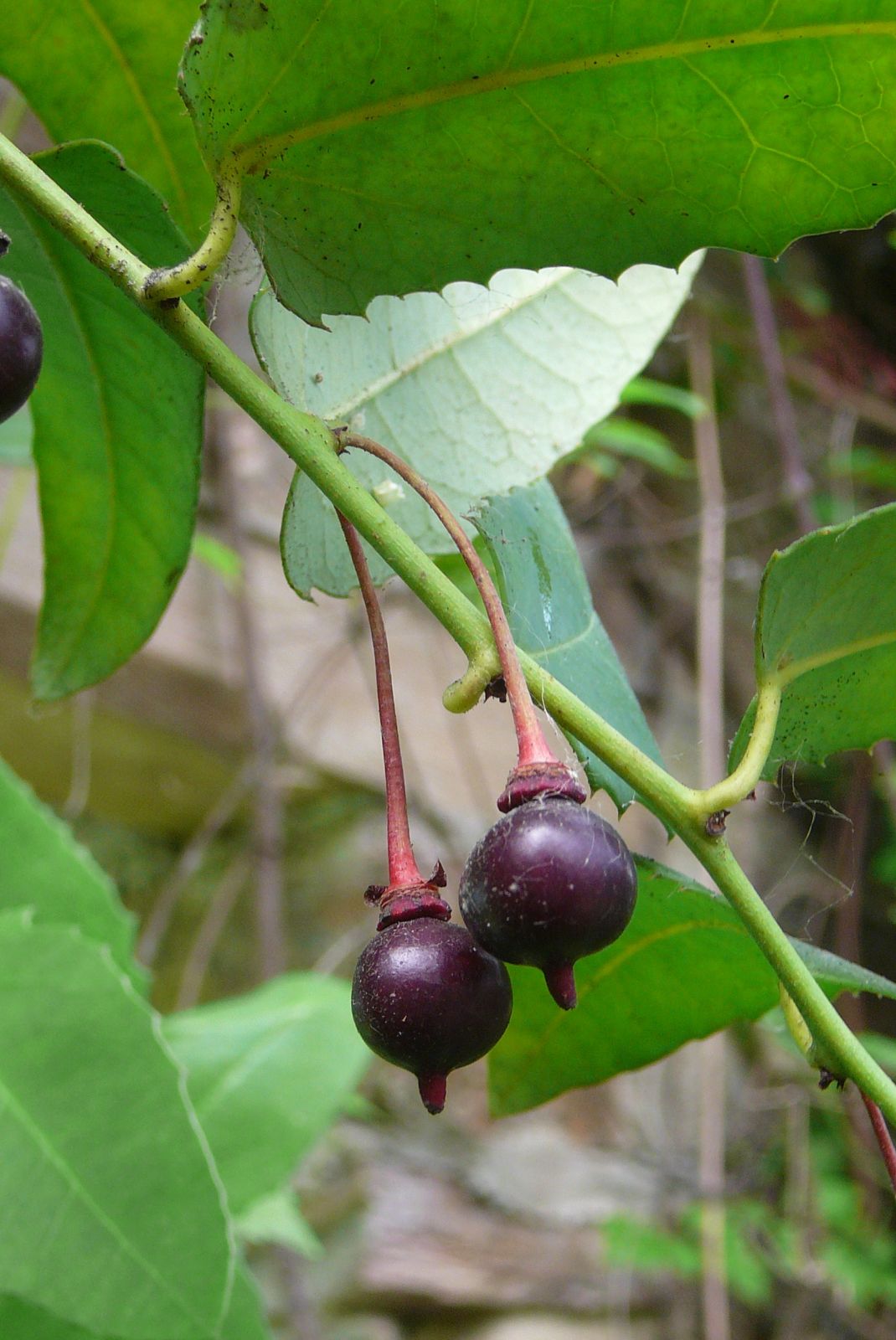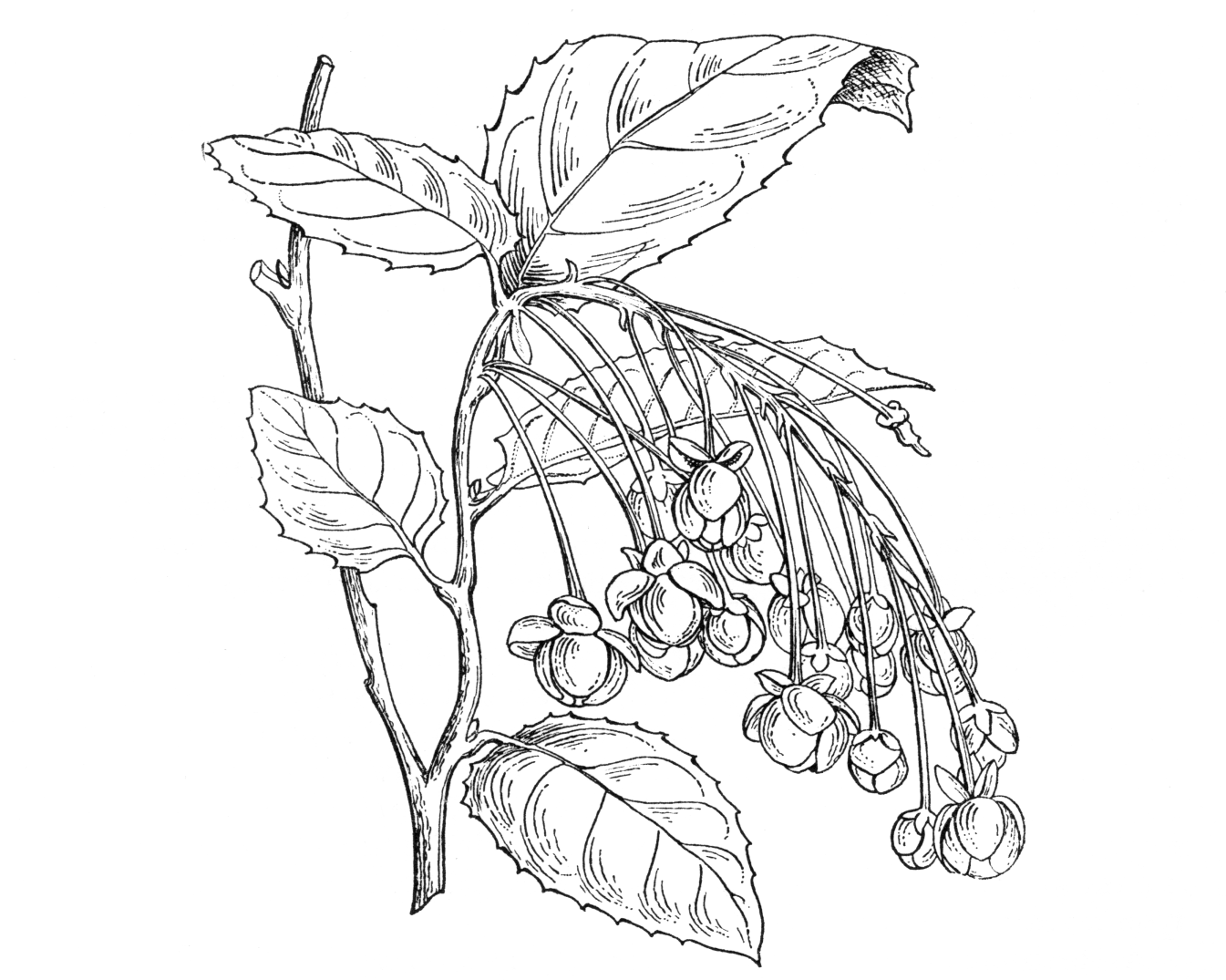Berberidopsis corallina
Credits
Article from Bean's Trees and Shrubs Hardy in the British Isles
Recommended citation
'Berberidopsis corallina' from the website Trees and Shrubs Online (treesandshrubsonline.
Genus
Common Names
- Coral Plant
Other taxa in genus
An evergreen, scandent shrub of remarkable beauty. Leaves alternate, ovate or heart-shaped, rather hard in texture, the apex and margins set with spiny teeth; dark green above, glaucous beneath, 11⁄2 to 4 in. long. Flowers produced in the axils of the uppermost leaves and in a terminal raceme, the whole forming a crowded group of pendent blossoms. Each flower is borne on a slender stalk, 11⁄2 to 2 in. long, deep red like the flower itself which is globose, 1⁄2 in. across, composed of nine to fifteen petal-like segments, the outer ones of which are small and spreading, the inner ones larger and concave, all of the deep fine red which pervades the whole inflorescence. Bot. Mag., t. 5343.
Native of Chile, where it is said to be confined to the forests behind the port of Coronel, in Arauco province, and may by now be extinct even there; introduced by Richard Pearce in 1862. It is one of the most gorgeous of climbers but not completely hardy nor easy to suit. In favoured western gardens it can be trained up trees or allowed to ramble among shrubs, but elsewhere it needs the protection of a wall and must be carefully sited. A deep, moist soil is best, and a position where it is sheltered from drying winds and strong sun. A north wall is suitable so long as it is not exposed to winds from that quarter.
It commences to flower in July and continues in beauty for two or three months. The fruits form in this country, but do not usually produce good seed. Young plants can be raised from cuttings or layers. A little peaty soil should be put about the roots when first planted out but once established they will grow vigorously. This species will tolerate a slightly alkaline soil if peat is added, but is not really suited to chalky ones.

